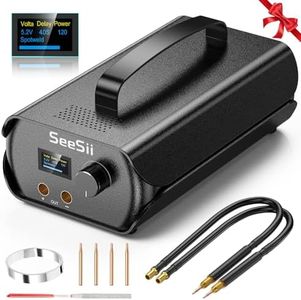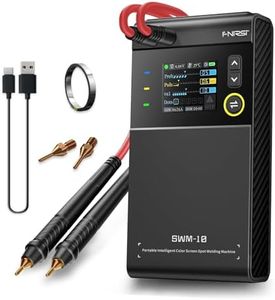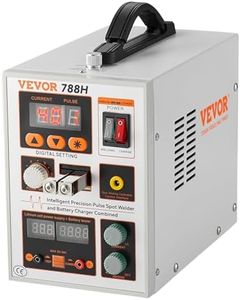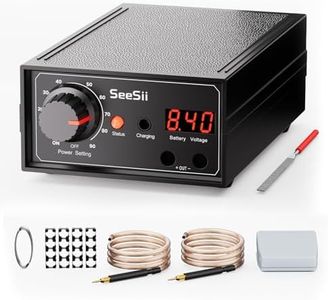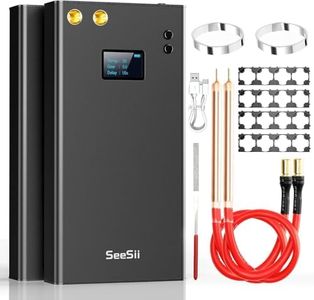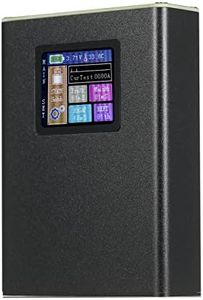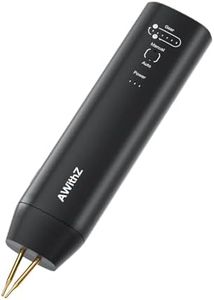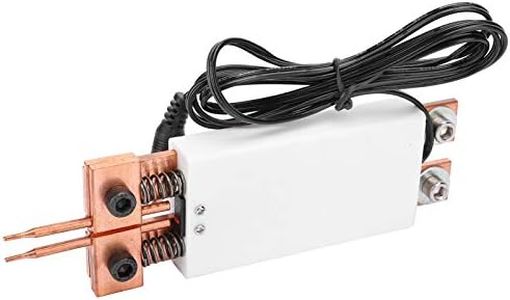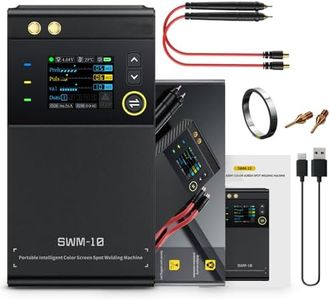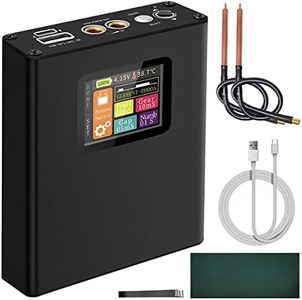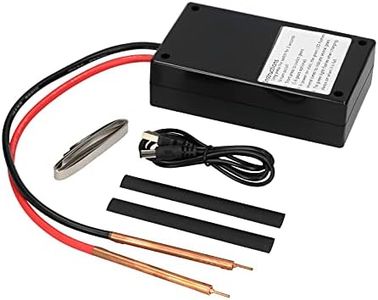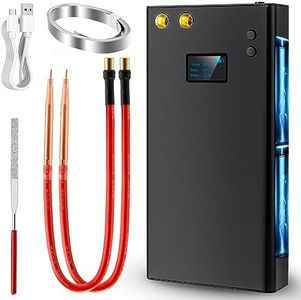We Use CookiesWe use cookies to enhance the security, performance,
functionality and for analytical and promotional activities. By continuing to browse this site you
are agreeing to our privacy policy
10 Best Battery Spot Welder
From leading brands and best sellers available on the web.Buying Guide for the Best Battery Spot Welder
Choosing a battery spot welder can feel overwhelming if you’re unfamiliar with the technology. These devices are used mainly for welding battery tabs when assembling or repairing battery packs, making them essential for DIY projects, electronics repair, and hobbyists in the field of renewable energy. The goal is to choose a spot welder that offers the right combination of power, control, and usability for your particular needs. By understanding the most important specifications of a spot welder, you can make a well-informed decision.Welding CurrentWelding current refers to the amount of electrical current (measured in amps) the spot welder can deliver. This determines the welder’s ability to fuse metal tabs to battery terminals effectively. Lower currents (50-200A) are suitable for thin tabs and small batteries like those found in electronics or small packs, while mid-range current (200-400A) is better for standard-sized battery tabs used in most consumer applications. High current (400A and above) is required for thicker tabs or large industrial battery packs. To choose the right current, consider the typical thickness and metal type of battery tabs you’ll be welding—thin tabs and smaller batteries require less current, while thicker metal and larger packs demand more.
Pulse SettingsPulse settings allow you to adjust how many bursts of current are applied in each welding cycle. This is important for controlling the heat applied to your battery and tab, which affects the quality of the weld. Single-pulse is generally safer on delicate batteries, and double or multiple pulses provide better welds for thick tabs by distributing heat gradually. If you regularly work with a variety of battery sizes, look for a welder that offers adjustable pulse settings so you can tailor the weld to each project.
Electrode Material and SizeThe electrodes are the tips that deliver current to the metal tab and battery terminal. Electrode material (commonly copper or copper alloys) determines durability and conductivity. Finer tips allow for precise spots but may wear out faster, while thicker electrodes last longer and distribute heat more evenly. Choose finer electrodes for precision work with small batteries and thicker electrodes for durability during high-volume or larger battery projects.
Compatibility with Battery TypesNot all spot welders are suitable for every kind of battery chemistry, such as lithium-ion, nickel-metal hydride, or lead-acid. Some types of batteries are more sensitive to heat, while others require stronger welds. Make sure the spot welder is compatible with the types of batteries you work with to ensure safety and reliable welding results.
Portability and Build QualityPortability determines how easy it is to move and use the spot welder in different locations. Compact and lightweight models are best for portable or temporary setups, while sturdier, heavier units are suited to bench work in a home or workshop environment. Build quality affects both the lifetime of the tool and the consistency of its welds—well-built welders tend to have better safety features and more reliable results. Pick a design that matches where and how you plan to use the welder: portability for mobility, sturdiness for frequent use in one spot.
User Interface and ControlsA clear, intuitive user interface—like easy-to-read digital displays and straightforward knob or button controls—makes setting and operating your welder much easier. This is particularly helpful for beginners or those who switch settings often. If you’re new to spot welding, look for a model with labeled controls and a simple setup process to avoid frustration and ensure safety.
